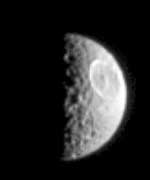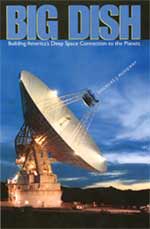Monday, April 4 – Tonight our binocular and telescope study will take us to a place of intrigue… An interacting pair of galaxies that are easily observed in Ursa Major. Start by drawing an imaginary line between Phecda and Dubhe, and extend that just one step further into space as we explore the M81 and M82.
Discovered in December 1774 by JE Bode at Berlin and photographed as early as March 1899, these two deep sky favourites will appear as a pair to binoculars and low power telescope fields. The M81 is truly spiral perfection with its symmetrical structure and bright nucleus. Spanning approximately 36,000 light years in diameter, it is one of the densest known galaxies with one third of its mass concentrated at the core. Because it contains vast numbers of red and yellow giants, larger telescopes at power will see a golden “glow” to the structure – the combined luminosity of twenty billion suns.
Its neighbor – the M82 – is often mistaken in the small telescope for edge-on in appearance, but shows no sign of true spiral structure movement. Its light is polarized, leading science to believe it contains a super-massive magnetic field. The M82 is also a powerful radio source with huge masses of dust irradiated by stars possessing unusual spectral qualities. A violent outburst may have occurred within the galaxy as recently as 1.5 million years ago releasing the energy equivalent of several million exploding suns. Shock waves emanating from the M81 resemble the synchrotron radiation first associated with planetary nebula M1 – but on an enormous scale. Can you image a supernova remnant the size of an entire galactic core region?!
Roughly every one hundred million years, M81 and M82 make a “pass” at one another, reaching out with immensely powerful gravitational arms to intertwine the two galaxies. It is theorized that during the last interaction, M82 raised rippling density waves which circulated throughout M81. The result? Possibly the most perfectly formed spiral galaxy in all of space, but M81’s influence left M82 a broken galaxy – filled with exploded stars and colliding gas – a galaxy so violent it emits X-rays. Reactions induced by colliding dust and gas caused the birth of numerous brilliant stars – stars capable of creating dense atoms and extreme motion that causes immense magnetic fields. The end may already be envisioned for the M81 and M82. Scientists speculate within a few billion years, the two galaxies will combine, becoming indistinguishable but for the welter of radiation that the union leaves behind. We known this same fate may await our own galaxy as we combine with our largest neighbor – the Andromeda Galaxy – but don’t let that stop you from viewing the M81’s intense core and smooth spiral form – or the M82’s notched spindle shape tonight…
That’s billions of years in the future.
Tuesday, April 5 – This evening we will study another pair of galaxies that can be seen in large binoculars and are outstanding for telescopic study. Identify the triangle of stars that mark the “hips” of Leo. The southwestern star is Theta and about three finger widths to its south is Iota. If skies are transparent enough to see Eta between them, then you will have no problem locating the M65 and M66 to Eta’s east/southeast.
Discovered by Mechain in March 1780, apparently Mr. Messier didn’t notice the bright pair when a comet passed between them in 1773. At around 35 million light years away, you will find the M66 to be slightly brighter than its 200,000 light year distant western neighbor – the M65. While both are Sb classed spirals, the two couldn’t appear more different. The M65 has a bright nucleus and a smooth spiral structure with a dark dustlane at its eastern edge. The M66 has a more stellar core region with thick, bright arms that show knots to larger scopes – as well as a wonderful extension from the southern edge. If you are viewing with a larger scope, you may notice to the north of this famous pair yet another galaxy! The NGC 3628 is a similar magnitude edge-on beauty with a great dissecting dark dustlane. This pencil-slim, low surface brightness galaxy is a bit of a challenge for smaller scopes, but larger ones will find its warped central disc well worth high power study.
Congratulations! You’ve just conquered the “Leo Trio”.
Wednesday, April 6 – Tonight let’s head for another trio of galaxies that are suited best for mid-to-large aperture telescopes. Begin by heading west about a fist’s width from Regulus and identify 52 Leonis. Our mark is one and a half degrees south.
At lower power you will see a triangle of galaxies. The largest and brightest is the M105 discovered by Mechain on March 24, 1781. This dense elliptical galaxy would appear to be evenly distributed, but the Hubble Space Telescope revealed a huge area within its core to be equal to about 50 million solar masses. Companion elliptical to the northeast – NGC 3384 will reveal a bright nucleus as well as an elongated form. The most faint of this group – NGC 3389 is receding spiral and for larger scopes will reveal a “patchiness” in structure.
Continue another degree south and enjoy another galactic pair. The widely spaced M96 and M95 are part of this galaxy grouping known as Leo I. The dusty spiral – M96 – will appear as a silver oval, whose nucleus is much sharper than its faint spiral arms that contained a supernova as recently as 1998. To M96’s west, you will discover one very beautiful barred spiral – M95. While both of these were discovered by Mechain only four days earlier than the M105, it wasn’t until recent years that they became the prime target of the Hubble Space Telescope. We enjoy the M95 for its unique ring-like arms and unmistakable barred core, but the HST was looking for cephid variables and determining the Hubble Constant. While we don’t need a space telescope to view this group of galaxies, we can now appreciate knowing that we can see 38 million light years away from our own backyard!
Thursday, April 7 – On this day in 1991, the Compton Gamma Ray Observatory (GRO) was deployed by space shuttle Atlantis. After serving for more than 9 years, the CRO plunged to a fiery death in the Pacific Ocean, but we can celebrate its accomplishments by viewing a source of gamma rays – the M87.
You may be able to detect the M87’s round glow with large binoculars slightly more than a fist’s width east of Epsilon Virginis with an 8th magnitude star, but telescope users will enjoy the most massive and luminous of all known galaxies. But there is much more here than meets the eye! Also known as Virgo A, the M87 is the fifth most intense radio source in the sky – 3C 274. It is also home to more than 4000 globular clusters (the Milky Way contains about 110) and a 4,000 light year long “jet” of high speed particles that could be associated with a black hole.
Friday, April 8 – Today’s highlight is a hybrid solar eclipse! Without the cursory lecture of safe solar observing techniques, observers in parts of Costa Rica, Panama, Venezuela and Columbia will enjoy the most exciting part of the show as the Sun moves from annular to total – and back to annular again around local sunset. For observers in Central America, the Caribbean and parts of South America, you will enjoy a spectacular partial eclipse that ranges anywhere from 80 to 90% coverage. Most of Mexico will get to see about half of the Sun in shadow, while the southern United States ranges from 20 to 40%. The northern-most limit cuts across central New Jersey, Pennsylvania, Ohio, Indiana, and southern Illinois and begins a southward arc ending in southern Arizona and California. For observers south of this line, it is still worth seeing a “bite” taken out of the Sun’s edge! For a list of times and many more details, please visit “Mr. Eclipse” – Fred Espenak – at this page.
Wishing you clear skies.
(Take advantage of tonight’s new moon to just roam around and enjoy the galaxy fields of Virgo. Never stress about identifying all you see, for the pleasure is just seeing them!)
Saturday, April 9 – This morning will present a unique opportunity for those who enjoy watching Jupiter’s moons. At 04:53 UT (12:43 a.m. ESDT), Io, Europa and Calisto will form a very close dance to Jupiter’s east. This formation will last for about an hour and will be well worth watching them move slowly apart.
Let’s use tonight’s dark sky to enjoy a “Jupiter-sized” planetary nebula – the M97. Often referred to as the “Owl”, you will find this sometimes difficult object about two and a half degrees south of Beta Ursae Majoris. Discovered on February 16, 1781 by the unsung hero Mechain, its visual brightness makes it a candidate for larger binoculars, but it takes a large aperture telescope to truly appreciate.
Graced by a 14th magnitude central star – one of the hottest known – this planetary nebula is highly unusual because we cannot clearly define its distance. The “Owl” is very complex, and its appearance has often been interpreted as a cylindrical torus viewed at an acute angle. What we see as “eyes” may be the less dense ends of the cylinder. The shell itself is encased by a fainter nebula or lower ionization. While we once believed this type of formation was the result of an ancient novae, the M97 re-defines our thinking. This quiet type of emission activity may just be the result of a star’s old age… Giving the ancient “Owl” a place of honour in the north.
Sunday, April 10 – Tonight’s singular destination can be detected as a faint glow in binoculars, can be found with the smallest of telescopes, but provides a stunning view with aperture. Set your sights on bright Spica and head eleven degrees due west…
Once again discovered by Mechain, the M104 – “Sombrero” – is one of the finest examples of an edge-on galaxy in the night sky. The “Sombrero” has a huge, bulging bright core region, well-defined spiral arms and a bold, dark dustlane. The core region is highly conspicuous and contains a vastly populated globular cluster system. As the dominating member of the 104 group, this fantastic galaxy is the one of the very first discovered in redshift. At around 400 million light years away, it is receding at about 700 miles per second, but that won’t stop you from enjoying its wonderful transparent qualities and star spangled field!
Until next week? Keep looking up and enjoying the wonders of the Cosmos! Light speed… ~Tammy Plotner


